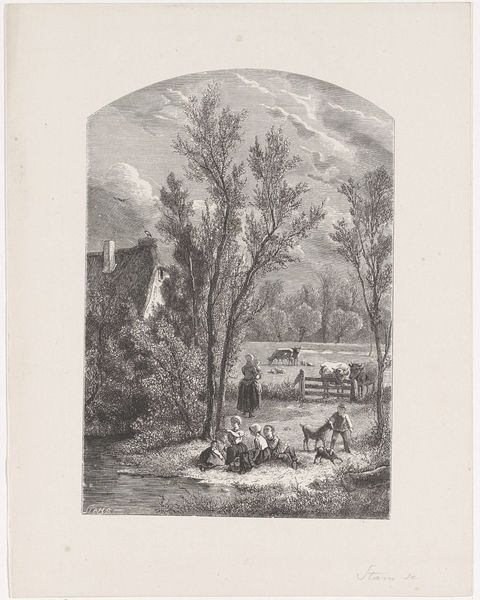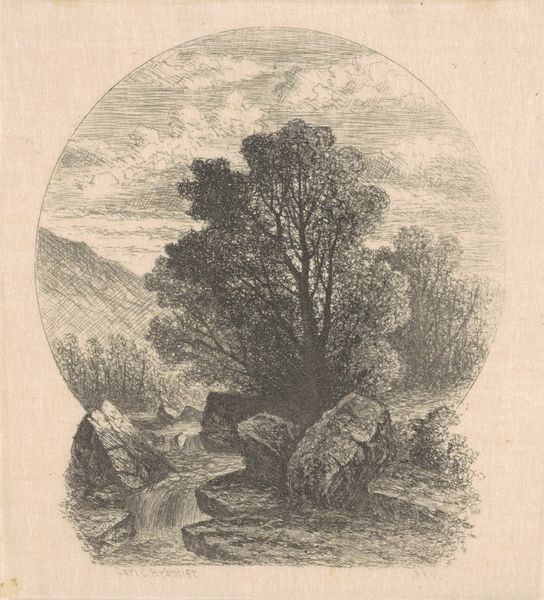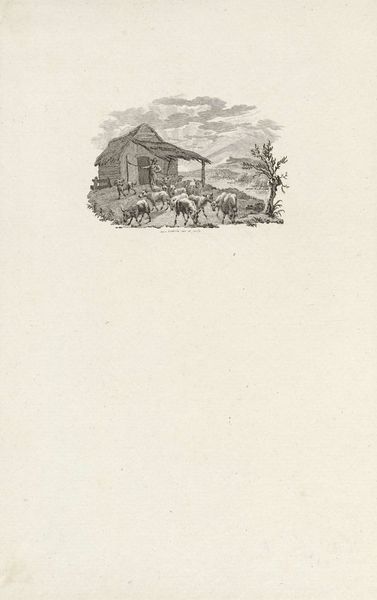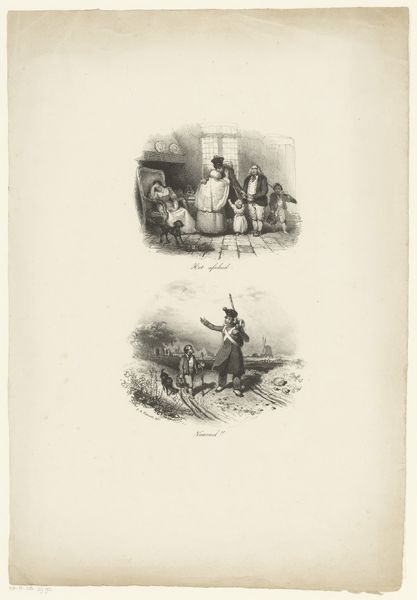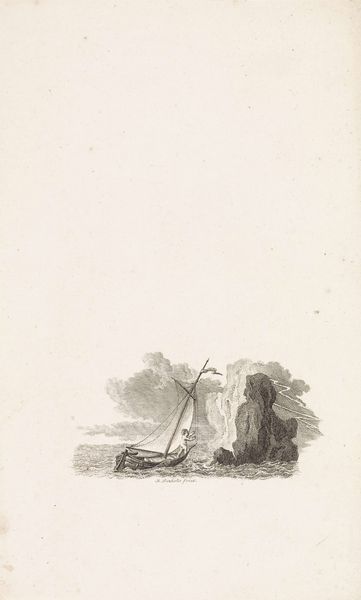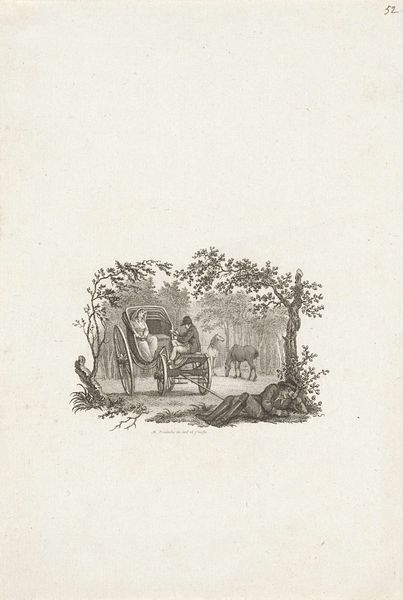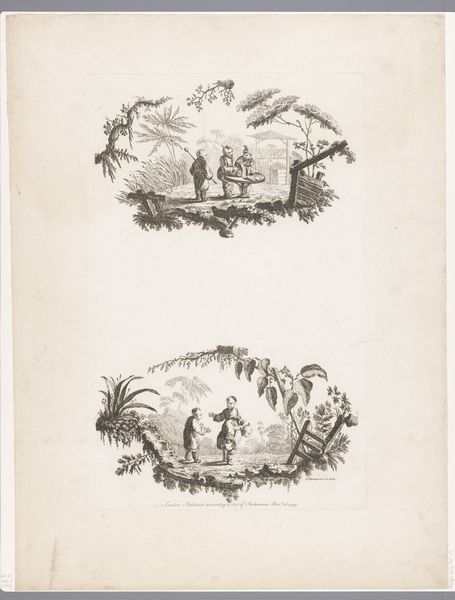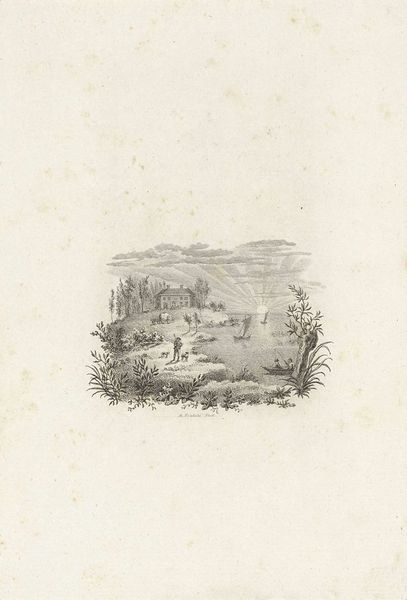
drawing, pencil
#
pencil drawn
#
drawing
#
pencil sketch
#
landscape
#
pencil
#
sketchbook drawing
#
pencil work
#
genre-painting
#
realism
Dimensions: height 216 mm, width 168 mm
Copyright: Rijks Museum: Open Domain
Charles Rochussen made this print, Schotse herder, using etching, a process deeply connected to the rise of industrial image-making. The etching reveals line by line, its marks made through the careful biting of acid into a metal plate. The controlled corrosion gives us the image: a young shepherd standing near a simple wooden structure, perhaps a pen for Highland cattle. The texture created mimics the rugged landscape, and the careful shading gives depth to the mountains in the background. Etching, unlike painting or sculpture, allowed for easy reproduction, democratizing art and imagery. It speaks to broader social shifts: the rise of a middle class, increased literacy, and a hunger for visual information. The labor-intensive process highlights the skill of the etcher, but also points to the burgeoning print industry, where art became a commodity. By considering the printmaking process, we can appreciate how Rochussen’s work participates in both artistic expression and the social and economic transformations of his time.
Comments
No comments
Be the first to comment and join the conversation on the ultimate creative platform.


